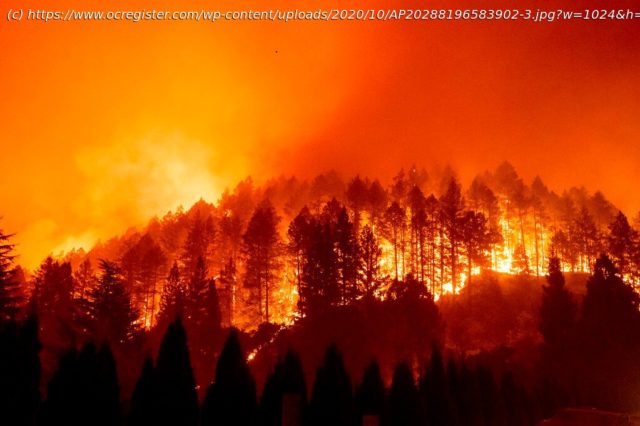This year is sure to go down as one of the worst wildfire seasons in California’s history.
This year is sure to go down as one of the worst wildfire seasons in California’s history. It is October and already over 4 million acres have burned across our state. In modern state history that is definitely a first. In fact, looking back over the last 20 years,2018 was previously the most destructive, with approximately 1.59 million acres burned. We have more than doubled that total and still have over a month left until the end of fire season. There are several ways that our state and federal government can minimize the destructive impact these fires have on our communities. The governor’s response to our record-breaking wildfire season is to combat climate change. His first order of business was to ban gas-powered vehicles by 2035, but that will not solve the wildfire problems the state is facing this year, next year or anytime in the near future. Although we continue to invest billions of taxpayer dollars in green projects, much of the state is shrouded in smoke, recording the worst air quality in the world. All of the gains that we achieve with our expensive green policies vanish in a blink of the eye due to these catastrophic fires. In fact, it is predicted that California’s 2020 wildfires will put approximately 90 million metric tons of carbon emissions into the air despite years of reduction efforts and billions of dollars in investments into the state’s cap and trade program. So what can we do to minimize the spread of wildfires in California? Most forestry experts agree that climate change is a contributing factor, but there is a growing consensus among forestry experts that the best way to prevent wildfires in the future is to focus more resources on forest management — a practice that the state currently does not prioritize. Although our cap and trade program was created to reduce greenhouse gas emissions, wildfire management is funded on a discretionary basis. So while high-speed rail (HSR) receives a continuous appropriation of 25 percent of the revenues generated by this program, there is no mechanism that funds forest management.
Start
United States
USA — Art With the right focus, California can minimize devastating impacts of wildfires






